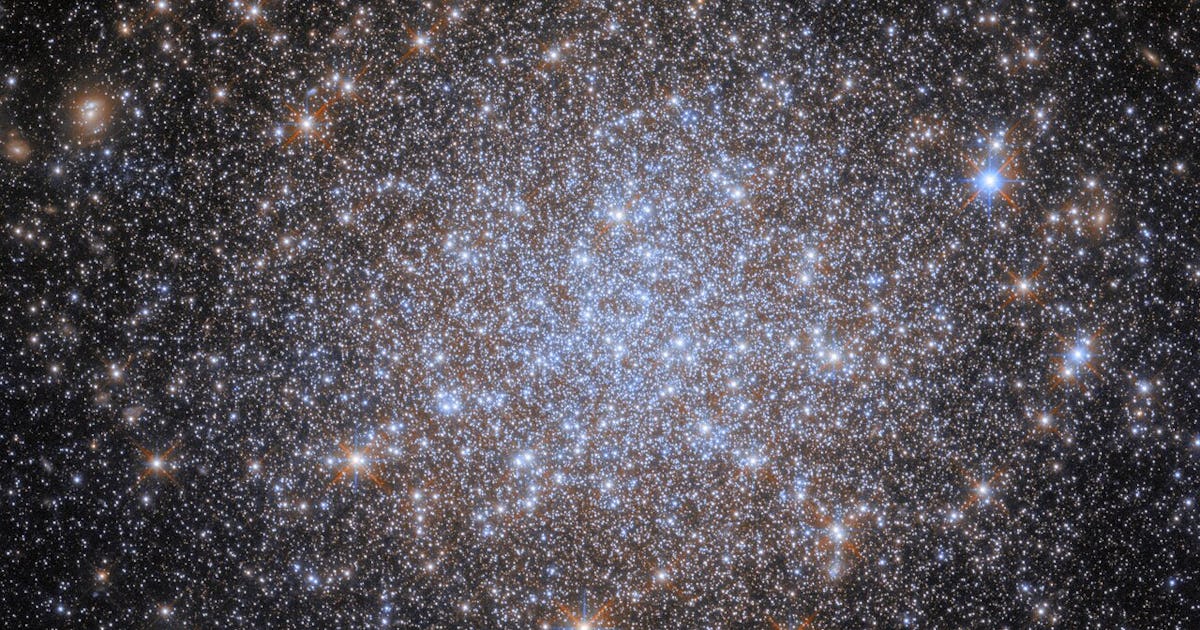Hubble Spots A Community Of Extremely Old Stars That Have Aced Longevity

A spherical shape made from the pinpricks of light from closely packed stars revealed itself to the Hubble Space Telescope when the observatory recently peered into the constellation Mensa.
Hubble snapped an image of a globular cluster, a community of stars that formed at approximately the same time and place, with similar compositions, whose population can be tens of thousands to millions of stars. Astronomers study globular clusters like this one, called NGC 1841, to learn about early star formation. These stars can be billions of years old.
“Globular clusters often contain large numbers of very old stars, which make them something akin to celestial ‘fossils,’” European Space Agency (ESA) officials wrote in an image description published Tuesday. The agency collaborates with NASA to run the telescope.
“Just as fossils provide insight into the early development of life on Earth, globular clusters such as NGC 1841 can provide insights into very early star formation in galaxies,” ESA officials added. For instance, their immense collective gravity helps them to retain their older, redder stars, which may have dispersed out of clusters with fewer members.
NGC 1841 is found inside a nearby satellite galaxy of the Milky Way. Called the Large Magellanic Cloud (LMC), this galaxy is gravitationally bound to our own and looks like a smudge on the southern sky. LMC is located about 162,000 light-years away from Earth.
“Hubble revolutionized the study of globular clusters,” ESA officials have previously written.
The space telescope’s orbital altitude of about 326 miles above Earth’s surface gives it an unobstructed view of individual stars. These details can be missed by ground-based telescopes. Hubble’s clarity of vision has made it an ideal tool for astronomers seeking answers for how these dense stellar hubs evolve and how the gravity of these clusters actually works.
